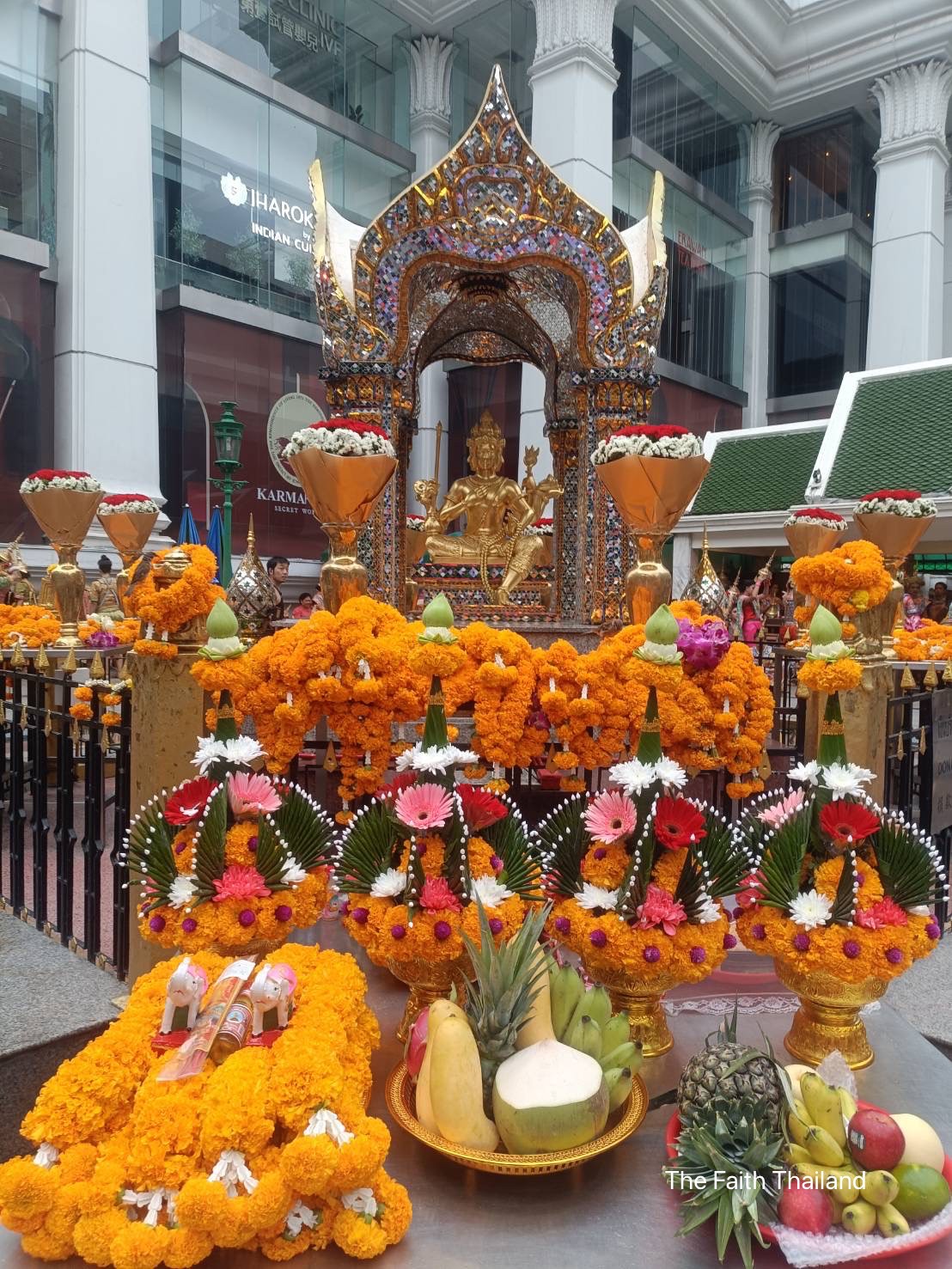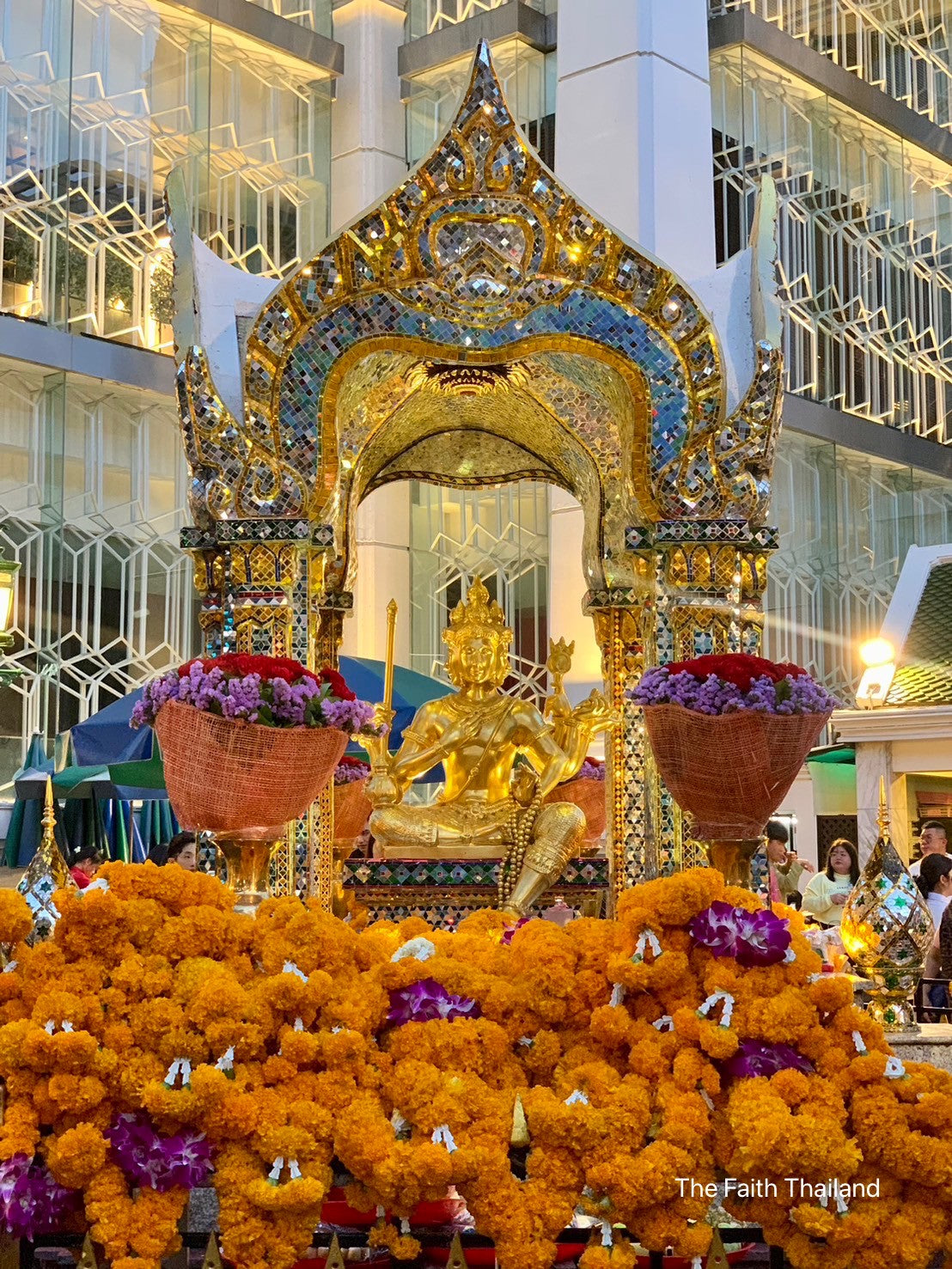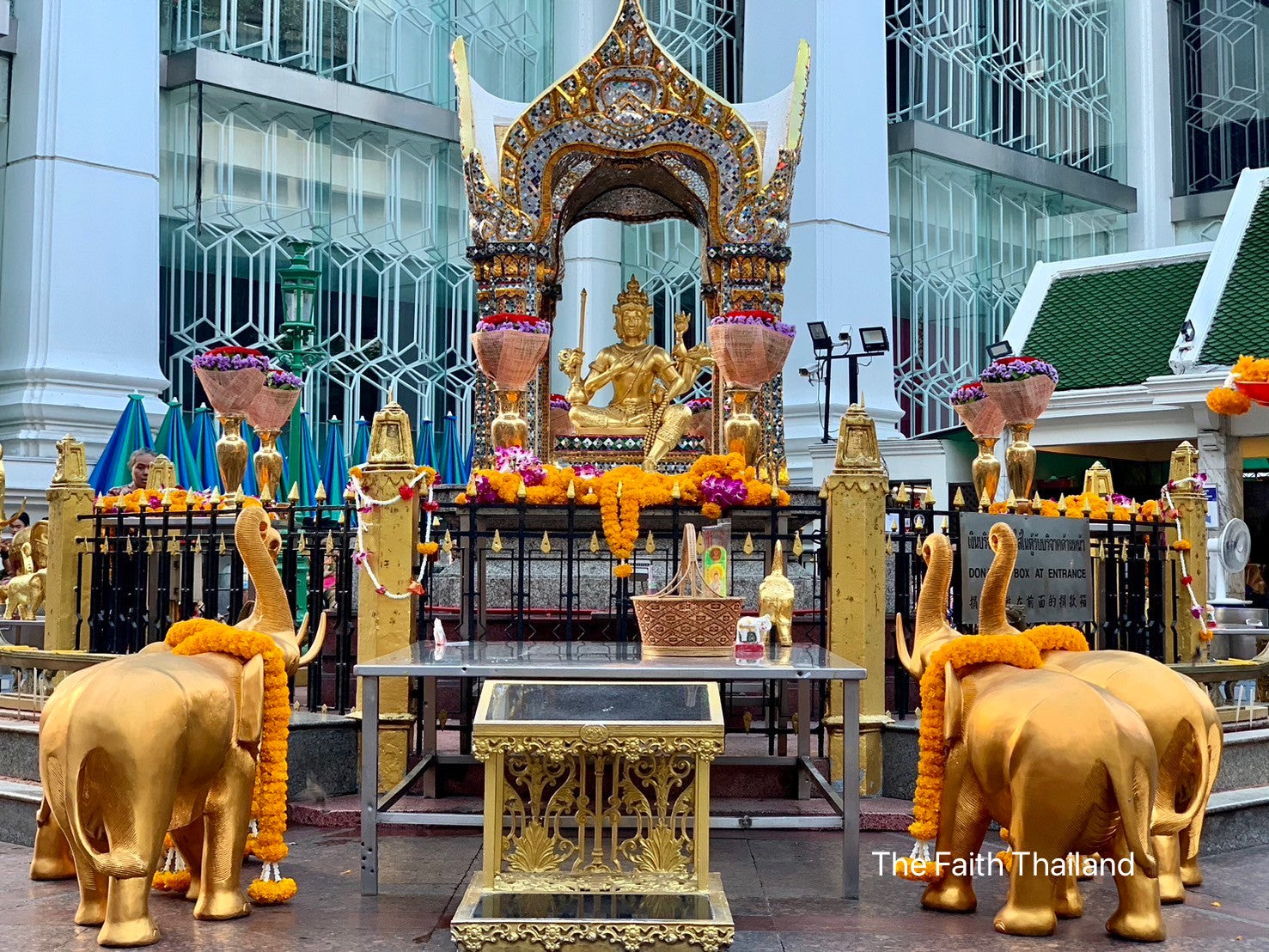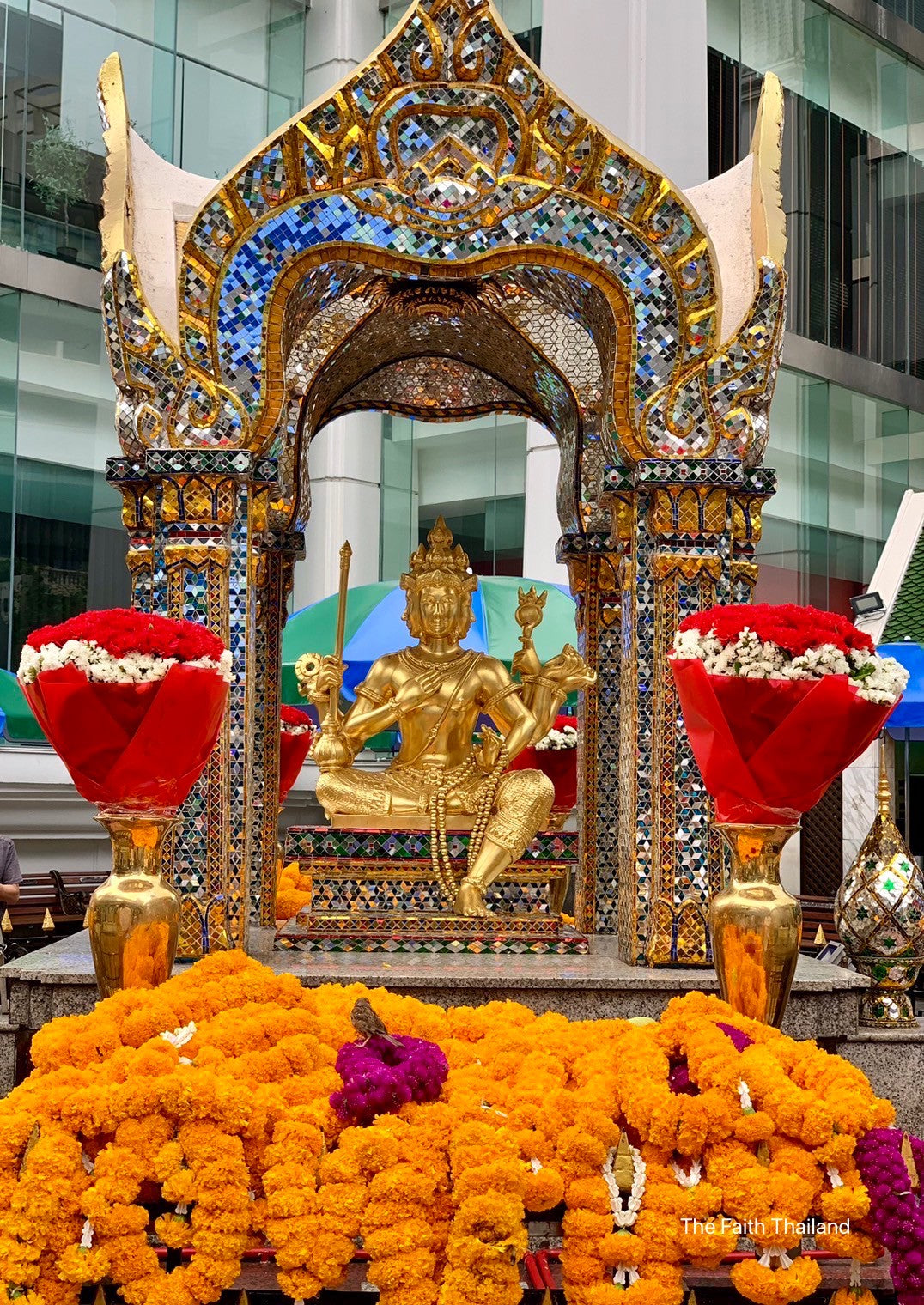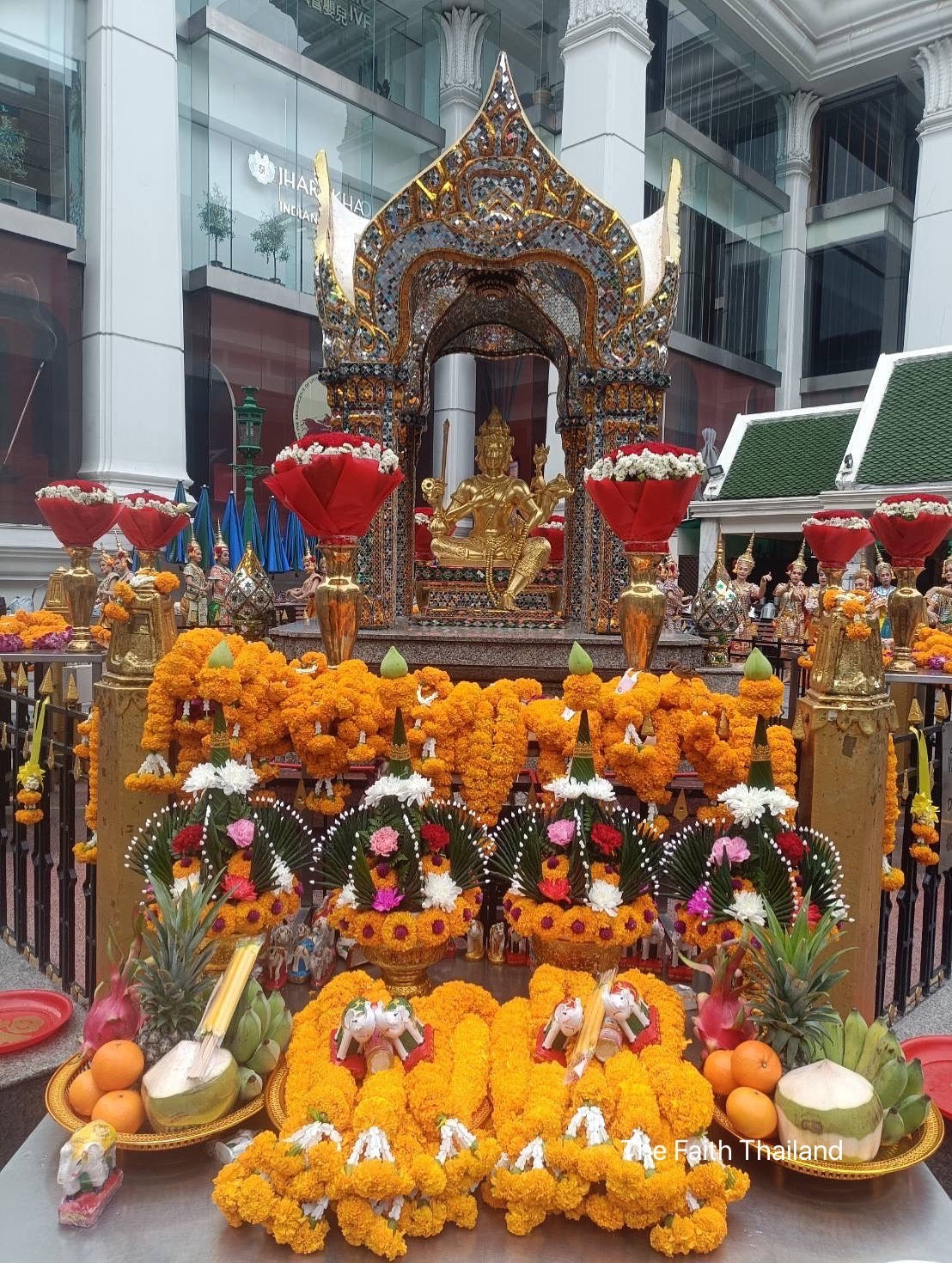Sounds of Thai temples: From chanting to bells, prayer experiences
Thai temples are not only famous for their magnificent architecture, magnificent Buddha statues and strong religious atmosphere, but the sounds in the temples are also an important part of the prayer ceremony. From the solemn chanting to the melodious bells, these sounds give the prayer process a deeper meaning. In this article, we will explore the unique role of various sounds in Thai temples in the prayer ceremony and analyze how they affect the emotions and hearts of the participants.
The sacred power of chanting
The sound of chanting in Thai temples is a peaceful and solemn presence. This sound is usually chanted collectively by monks, permeated with the power of devout faith. The rhythm and rhythm of the chanting can calm the spirit of the participants. For those who come to pray for academic studies, the chanting is especially effective in concentrating and improving attention.
To know more details about the academic prayer, you can read our related article: "How to Experience the Real Academic Prayer at the Erawan Shrine in Bangkok" .
In addition, the sound of chanting not only conveys Buddhist wisdom, but also helps people release psychological stress through its vibration frequency. Scientific research shows that regular and gentle sounds can promote inner tranquility and help participants enter a deep state of meditation.
The profound significance of the bells in prayer
When you walk into a Thai temple, the ethereal sound of bells is hard to ignore. Ringing the bells is believed to be a way to connect humans with the heavens. In prayer ceremonies, the sound of the bells plays a role in opening prayers, and people believe that every echo of the bells can make the prayers more clearly transmitted to the universe.
The sound of bells often accompanies people's first steps into a temple, symbolizing the transition from the mundane to the spiritual. The deep frequency of the bells not only touches people's hearing, but also triggers deep spiritual resonance, which is believed to help clear negative energy and provide a pure starting point for those who wish to pray.
If you are interested in cross-cultural faith experiences, you may wish to read our other article: "Faith Across Cultures: My Miraculous Encounter with the Four-Faced Buddha in a Foreign Country."
The harmonious resonance of instruments and natural sounds
In addition to the chanting and bell sounds, there are many sounds of instruments and natural sounds in Thai temples to add depth to the prayer process. For example, the sound of wind chimes often accompanies the breeze, injecting a light and spiritual atmosphere into the temple space. In more solemn ceremonies, the rich sounds of drums and gongs are used to emphasize the importance of the ceremony and further enhance the sacredness of the ceremony.
These sounds are not only part of the ritual, but also a medium of communication, building a bridge between believers and the Buddha. Through these sounds, believers can release their inner desires and seek inner peace and satisfaction. This unique sensory experience is particularly precious in Thai culture and is a way of praying that is difficult to replicate in other regions.
The impact of sound on emotions and the mind
The sound prayer experience in Thai temples is deeply rooted in the connection between emotions and souls. The chanting can evoke people's awe and piety, while the sound of the bell can instantly grab people's attention and bring inner enlightenment. In such a sound environment, participants can feel their inner demands more deeply and gain spiritual comfort from it.
If you are interested in the cultural stories of Thai temples, especially the heritage and legends related to the Four-Faced Buddha, please check out our related article: "The Four-Faced Buddha of Thailand: The Cultural Roots Behind the Supernatural Stories" .
Browse our selection of Thai spiritual objects
In addition to the exploration of culture and sound, if you are also looking for related Thai blessing products, welcome to browse our collection of Thai spiritual products to add more sacred energy to your prayer journey.
Conclusion: Exploring the mysterious charm of Thai temple sounds
Whether it is the deep and melodious sound of chanting or the ethereal and ancient sound of bells, these sounds give Thai temples an indelible spiritual imprint. Through the transmission of sound, people can go deep into their hearts and establish a stronger connection with their wishes, beliefs and spiritual world.
If you are planning a trip to Thailand, why not visit these temples and experience how these mysterious and unique sounds can deeply touch your soul. In the meantime, don’t forget to check out our selection of Thai prayer products to make your prayers more meaningful.
In an era when the exploration of religious rituals is becoming a global trend, the sounds of Thai temples are undoubtedly an important journey worth experiencing. Not only believers, but anyone interested in culture and the spiritual world can gain enlightenment from it.
Sounds of Thai Temples: From Chanting to the Prayer Experience of Bell Tolls
Thai temples are renowned not only for their magnificent architecture, resplendent Buddha statues, and rich religious atmosphere, but also for the sounds within them that are a vital component of prayer rituals. From the solemn chanting to the melodious bell tolls, these sounds give the prayer process a deeper significance. In this article, we will delve into the unique roles of various sounds within Thai temples during prayer ceremonies and analyze how they impact the emotions and minds of participants.
The Sacred Power of Chanting
The chanting in Thai temples is a calm and dignified presence. This sound, usually chanted collectively by monks, permeates with devout strength of faith. The rhythm and melody of chanting can stabilize the spirit of participants, and for those who come to pray for academic success, chanting is particularly helpful in focusing the mind and enhancing concentration.
To learn more about academic prayers, you can read our related article: “How to Experience Genuine Academic Prayer at Bangkok's Four-Faced Buddha” .
Additionally, the chanting not only conveys Buddhist wisdom but also helps people release psychological stress through its vibrational frequency. Scientific research has shown that regular and gentle sounds can promote inner tranquility, helping participants enter a deep state of meditation.
The Profound Significance of Bell Tolls in Prayers
When you walk into a Thai temple, the ethereal bell tolls are always hard to ignore. Striking the bell is considered a way to connect humans with the divine path. During prayer ceremonies, the bell tolls serve to initiate the prayers, and it is believed that each sound resonates more clearly with the universe, transmitting the prayer intentions.
The bell tolls often accompany the first step into the temple, symbolizing the transition from the mundane to the spiritual. The deep frequency of the bell not only touches the auditory senses but also evokes deep spiritual resonance, believed to help clear negative energy and provide a pure starting point for worshipers.
If you are interested in cross-cultural faith experiences, feel free to read another of our articles: “Crossing Cultures in Faith: My Encounter with the Four-Faced Buddha in a Foreign Land” .
The Harmonious Resonance of Ritual Instruments and Natural Sounds
In addition to chanting and bells, there are many sounds from ritual instruments and natural sound effects within Thai temples that add profound meaning to the prayer process. For example, the sound of wind chimes often accompanies the gentle breeze, infusing the temple space with a light spiritual ambiance. In more solemn ceremonies, the deep sound effects of large drums and gongs are used to emphasize the importance of the ceremony, further enhancing the sacredness of the ritual.
These sounds are not merely part of the ceremony; they are a medium of communication, bridging the gap between believers and Buddhas. Through these sounds, believers can release their inner wishes, seeking inner peace and fulfillment. This unique sensory experience is particularly precious in Thai culture and represents a way of prayer that is difficult to replicate elsewhere.
The Impact of Sounds on Emotions and the Soul
The sound prayer experience in Thai temples is deeply rooted in the connection between emotions and the soul. Chanting can evoke a sense of awe and devoutness, while the bell tolls can instantly capture attention and bring about inner enlightenment. In this sound-rich environment, participants can profoundly feel their inner desires and simultaneously receive spiritual solace.
If you are interested in the cultural stories of Thai temples, especially the heritage and legends related to the Four-Faced Buddha, please check our related article: “The Four-Faced Buddha of Thailand: The Cultural Roots Behind Mystical Stories” .
Browse Our Selection of Thai Spiritual Items
Apart from the exploration of culture and sounds, if you are also looking for related Thai prayer products, feel free to browse our collection of Thai spiritual items to add more sacred energy to your prayer journey.
Conclusion: Exploring the Mystical Charm of Thai Temple Sounds
Whether it is the deep and melodious chanting or the ethereal ancient bell tolls, these sounds imbue Thai temples with an indelible spiritual imprint. Through the transmission of sound, people can delve into their hearts and establish stronger connections with their wishes, faith, and spiritual world.
If you are planning a trip to Thailand, consider visiting these temples to experience how these mysterious and unique sounds deeply touch your soul. Meanwhile, don't forget to check our selection of Thai prayer products to make your prayers more meaningful.
In this era where religious ceremony exploration is gradually becoming a global trend, the sounds of Thai temples are undoubtedly an important journey worth experiencing. Not only for believers but anyone interested in culture and the spiritual world can gain inspiration from it.


